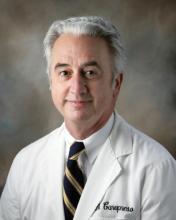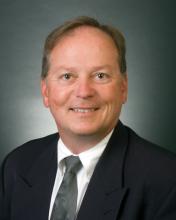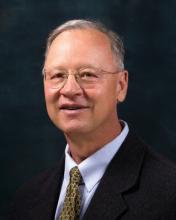Multiple studies paint a picture of the continuing and projected shortage of general surgeons in the United States, especially in rural areas.
The number of general surgeons per 100,000 population dropped by 3.6% between 2004 and 2008, according to a 2010 study by the American College of Surgeons (ACS) Health Policy Research Institute. Projections by the federal Health Resources and Services Administration show that the number of general surgeons will drop by 3% between 2000 and 2020 from 33,980 to 31,880.
Additionally, the surgeon population overall is aging and retiring at a faster pace than new surgeons are entering practice, according to an analysis done by the ACS Health Policy Research Institute. Approximately one-third of all surgeons are older than age 55 years; the median age for rural surgeons is higher than for those who practice in urban areas.
Dr. Phil Caropreso, age 64, has been practicing in two small area hospitals in Keokuk, Iowa, for the past 13 years. Keokuk, a town of about 11,000 in the southeastern corner of the state, appeals to outdoors enthusiasts who enjoy hunting, fishing, golfing, and boating.
The only other general surgeon there retired, and Dr. Caropreso is now on call 24 hours a day, 7 days a week, for the two hospitals.
"Recruiting has almost been impossible," said Dr. Caropreso. "We’ve been advertising for the last 7 years in both [hospitals]." They have had recruitment services, placed ads in journals, talked with the residency director at University of Iowa, Iowa City, he said. Only a few people came to be interviewed. A couple of surgeons accepted the job, but left shortly thereafter.
"Surgeons today seem to prefer more urban areas; they want a different kind of work ethic. They’re trained differently. They now go into subspecialty surgery, and they don’t want to come here," he said.
Along with primary care physicians, general surgeons are a crucial component of the rural health care team, and they are essential to maintaining the financial health of the rural hospital, according to the Mithoefer Center for Rural Surgery in Cooperstown, N.Y. The center was established in 2004 to develop solutions aimed at benefiting rural citizens, rural surgeons, and rural hospitals.
"There’s a lot of information that shows that [rural surgeons are the] economic engine that maintains small rural hospitals," said Dr. David C. Borgstrom, the center’s codirector. "They’re the primary endoscopist for the community. They do a wide range of surgeries; they do obstetrics services, a bit of orthopedics," and other procedures, he added.
But many of today’s general surgeons are not as broadly trained as their colleagues were a decade or so ago, some surgeons say. Experienced rural general surgeons who can perform a wide range of procedures such as obstetrical, urological, and orthopedic procedures are becoming rare.
"I was trained in the ’70s and ’80s at [the then-Cook County Hospital, Chicago] where we were trained to do just about everything," said Dr. Arnold Serota, who until recently practiced general surgery in Kauai, Hawaii.
"The general surgery training back then was much different than it is now. In addition to routine general surgery – laparoscopic and open cases – I was doing trauma, critical care, placing pacemakers, esophagogastroduodenoscopies and colonoscopies, vascular surgery, and more," he said in an interview. "Now that I have left Kauai, there is no one person who can provide the services that I did." The scope of what more recently trained surgeons do is much more limited, he explained.
The economic and lifestyle preferences of the newer generation of medical school graduates also play into the rural surgeon shortage. According to a study by the Robert Graham Center, the policy arm of the American Academy of Family Physicians, "Growing physician income disparities are a major driver of student behavior. This income disparity explains much of the difficulty in achieving the balance in specialty and geographic physician distribution and will continue to inhibit achieving the workforce needed for better quality, efficiency, and equity."
The study adds that rural birth, interest in serving underserved or minority populations, and rural or inner-city training experience increase the likelihood of students choosing primary care or practice in rural and underserved areas.
This has been the case with Dr. Steve Olson, age 55, who grew up in rural Cooperstown, N.Y., where his father was a surgeon at the local hospital. "I’ve always liked practicing in rural environments and bringing new things to the rural areas," he said.




